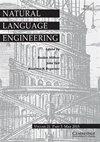Improved conversational recommender system based on dialog context
IF 1.9
3区 计算机科学
Q3 COMPUTER SCIENCE, ARTIFICIAL INTELLIGENCE
引用次数: 0
Abstract
Conversational recommender system (CRS) needs to be seamlessly integrated between the two modules of recommendation and dialog, aiming to recommend high-quality items to users through multiple rounds of interactive dialogs. Items can typically refer to goods, movies, news, etc. Through this form of interactive dialog, users can express their preferences in real time, and the system can fully understand the user’s thoughts and recommend corresponding items. Although mainstream dialog recommendation systems have improved the performance to some extent, there are still some key issues, such as insufficient consideration of the entity’s order in the dialog, the different contributions of items in the dialog history, and the low diversity of generated responses. To address these shortcomings, we propose an improved dialog context model based on time-series features. Firstly, we augment the semantic representation of words and items using two external knowledge graphs and align the semantic space using mutual information maximization techniques. Secondly, we add a retrieval model to the dialog recommendation system to provide auxiliary information for generating replies. We then utilize a deep timing network to serialize the dialog content and more accurately learn the feature relationship between users and items for recommendation. In this paper, the dialog recommendation system is divided into two components, and different evaluation indicators are used to evaluate the performance of the dialog component and the recommendation component. Experimental results on widely used benchmarks show that the proposed method is effective.改进的基于对话上下文的会话推荐系统
会话推荐系统(CRS)需要在推荐和对话两个模块之间无缝集成,旨在通过多轮互动对话向用户推荐高质量的商品。Items通常指商品、电影、新闻等。通过这种形式的互动对话,用户可以实时表达自己的喜好,系统可以充分了解用户的想法,并推荐相应的物品。虽然主流的对话推荐系统在一定程度上提高了性能,但仍然存在一些关键问题,如没有充分考虑实体在对话中的顺序,对话历史中项目的贡献不同,生成的响应多样性低。为了解决这些不足,我们提出了一种改进的基于时间序列特征的对话上下文模型。首先,我们使用两个外部知识图增强词和项的语义表示,并使用互信息最大化技术对齐语义空间。其次,在对话框推荐系统中加入检索模型,为回复生成提供辅助信息;然后,我们利用深度时序网络对对话内容进行序列化,更准确地学习用户和项目之间的特征关系进行推荐。本文将对话推荐系统分为两个组成部分,并采用不同的评价指标对对话组件和推荐组件的性能进行评价。在广泛使用的基准测试上的实验结果表明,该方法是有效的。
本文章由计算机程序翻译,如有差异,请以英文原文为准。
求助全文
约1分钟内获得全文
求助全文
来源期刊

Natural Language Engineering
COMPUTER SCIENCE, ARTIFICIAL INTELLIGENCE-
CiteScore
5.90
自引率
12.00%
发文量
60
审稿时长
>12 weeks
期刊介绍:
Natural Language Engineering meets the needs of professionals and researchers working in all areas of computerised language processing, whether from the perspective of theoretical or descriptive linguistics, lexicology, computer science or engineering. Its aim is to bridge the gap between traditional computational linguistics research and the implementation of practical applications with potential real-world use. As well as publishing research articles on a broad range of topics - from text analysis, machine translation, information retrieval and speech analysis and generation to integrated systems and multi modal interfaces - it also publishes special issues on specific areas and technologies within these topics, an industry watch column and book reviews.
 求助内容:
求助内容: 应助结果提醒方式:
应助结果提醒方式:


